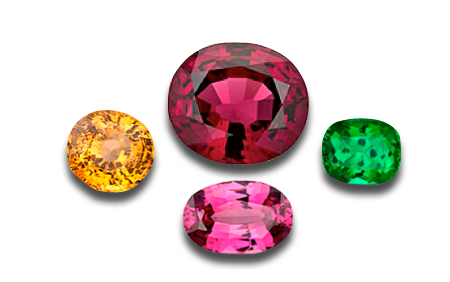All About Birthstones: Garnet for January
The garnet is actually a group of several minerals that have been used since the Bronze Age as gemstones and abrasives. There are six common garnet minerals – and several other rare species. The most common garnets are almandine, andradite, grossular, pyrope, spessartine and uvarovite The name “garnet” comes from 14th century Middle English word gernet meaning ‘dark red’,
The deep red transparent stones we normally associate with gemstone garnets are the Almandine garnets. However, Garnet actually displays the greatest variety of color of any mineral, occurring in every color except blue.
For Gemstone worthy garnets in other colors there are the green “demantoid” and “tsavorite,” the orangy red “hessonite” and the pink/red “rhodolite.” Besides brilliance and attractive colors, garnets sometimes exhibit optical phenomena such as asterism (a star-shaped pattern of reflections), chatoyancy (a “cat’s-eye” seen in reflected light), or a color change when viewed under different types of lighting.
Red garnets were the most commonly used gemstones in the Late Antique Roman world, and of the “barbarian” peoples who took over the territory of the Western Empire. They were especially used inlaid in gold cells in the cloisonné technique, a style often just called garnet cloisonné, found from Anglo-Saxon England.
Because the chemical composition of garnet varies, the atomic bonds in some species are stronger than in others. As a result, this mineral group shows a range of hardness on the of about 6.5 to 7.5.


